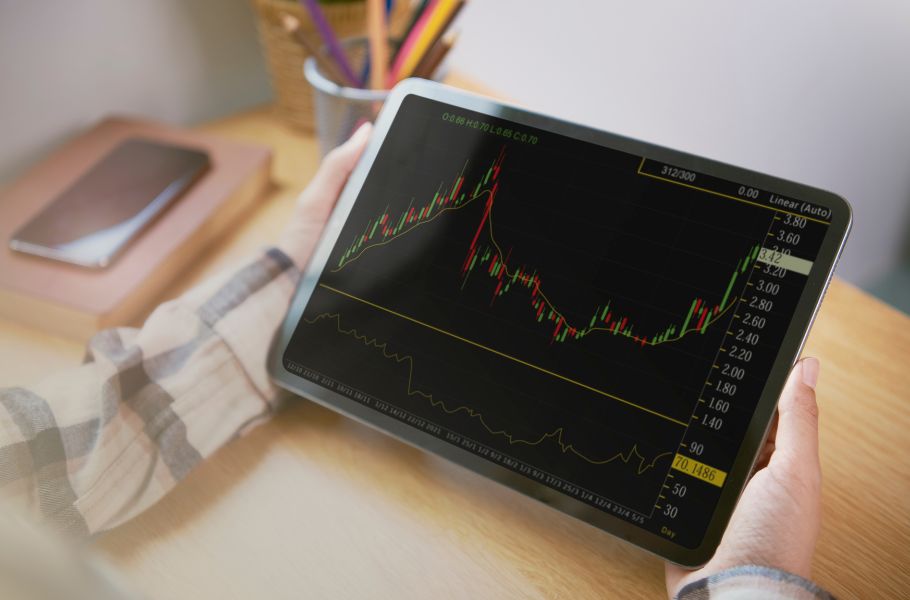Growth in e-commerce has quietly reshaped the way we live, shop, and connect with businesses around the world. What once started as a convenient alternative to in-store shopping has now become an everyday routine for millions. This steady evolution isn’t just about digital progress—it’s a reflection of how people are embracing ease, personalization, and new ways to interact with products and services. As more individuals and brands step into the digital marketplace, the journey of e-commerce continues to unfold with gentle innovation and human-centered care.
A New Chapter in the Shopping Experience
Traditionally, shopping was more than just a task—it was a physical experience. People would walk into stores, touch fabrics, try out products, talk to shopkeepers, and carry home their purchases. But over time, especially in the last decade, this experience has slowly moved into the digital space.
Growth in e-commerce introduced a simpler, more flexible way to shop—one that fits into busy lives and varying schedules. With just a few clicks or taps, people can explore thousands of products, compare prices, read reviews, and make a purchase without ever stepping out the door.
This shift didn’t eliminate traditional retail; rather, it expanded the possibilities of how people interact with the market. E-commerce became an extension of everyday life, blending convenience with choice in a way that continues to evolve.
Factors Behind the Growth in E-commerce
The reasons for the rise in e-commerce are layered and interconnected. Let’s explore some of the gentle forces that have driven this change:
Improved Internet Access
One of the biggest contributors to Growth in e-commerce is the widespread availability of internet access. High-speed connections have become more affordable and reachable—even in remote and rural areas. This digital connectivity has opened up new markets and allowed more people to explore online shopping.
Mobile Shopping on the Rise
Smartphones have become a powerful tool for online buyers. Whether it’s shopping during a morning commute or browsing while watching a movie, mobile commerce has brought shopping into moments that were once unthinkable. Retailers have optimized their platforms for mobile use, making the process smooth and user-friendly.
Pandemic-Induced Acceleration
While the world was already moving toward online shopping, the COVID-19 pandemic gave it an unexpected boost. Lockdowns and health concerns led people to try online platforms—some for the very first time. What began as a necessity soon became a preference. Many who initially hesitated discovered the simplicity and comfort of e-commerce and chose to stick with it even after restrictions lifted.
Trust and Transparency
In the early days, online shopping came with skepticism. People questioned quality, payment safety, and delivery. Over time, however, platforms introduced stronger security systems, user reviews, transparent return policies, and responsive customer support. These steps built trust and encouraged repeat purchases.
A Heartfelt Connection Between Brands and Customers
Another beautiful aspect of e-commerce is the way it has allowed brands and customers to connect more directly. Through personalized email recommendations, chat support, loyalty programs, and thoughtful packaging, many businesses have started treating online buyers with the same care as in-store guests.
Small businesses, especially, have found a voice. Platforms like Shopify, Etsy, and even Instagram Shops have given them the space to showcase their products without needing a physical storefront. For many artisans, creators, and boutique sellers, e-commerce has opened doors that were previously closed due to cost, geography, or lack of exposure.
The Role of Technology
Behind the scenes of every smooth shopping experience lies thoughtful technology. Artificial intelligence helps suggest products based on a shopper’s interests. Machine learning analyzes behaviors to improve websites and make them more intuitive. Chatbots offer quick answers, while data tools track inventory and delivery updates in real-time.
These innovations aren’t there to replace the human experience—they’re meant to enhance it. By removing friction and personalizing journeys, technology gently supports shoppers in finding exactly what they need without feeling overwhelmed.
Sustainable Shopping and Conscious Choices
The growth in e-commerce has also led to a rise in conscious consumerism. People are not just buying—they’re making more informed choices. Many buyers now look for ethical brands, eco-friendly packaging, and transparent business practices. Online platforms have responded by highlighting sustainability efforts, offering recycled packaging, and supporting fair-trade products.
This trend reflects a deeper shift: shoppers are aligning their purchases with their values, and e-commerce is helping facilitate those mindful decisions.
Challenges That Come with Growth
As with any major shift, the growth in e-commerce hasn’t come without its challenges. Delivery logistics, especially in high-demand seasons, can sometimes falter. Returns and exchanges can be complicated. And digital fatigue—caused by too much screen time—can also make online shopping feel less joyful for some.
Moreover, the intense competition among sellers has pushed some to rely heavily on discounts, which can sometimes affect product quality or customer satisfaction. Maintaining a balance between affordability and authenticity is an ongoing journey for many businesses in the e-commerce world.
The Blending of Online and Offline Worlds
Interestingly, as Growth in e-commerce, the lines between online and offline shopping are becoming softer. Many brands now offer “click and collect” services where you can order online and pick up in-store. Others allow you to browse in person and have items delivered to your home.
This blend—often called omnichannel retail—offers the best of both worlds. It recognizes that shopping is not just about buying things; it’s also about comfort, exploration, and flexibility.
A Future Full of Possibilities
The growth in e-commerce is far from finished. Looking ahead, we can expect even more innovations. Voice-assisted shopping, augmented reality for trying on clothes or furniture virtually, and faster delivery methods like drones are already being tested.
But even with all these exciting changes, one thing will remain central: the focus on people. E-commerce will continue to grow not because of technology alone, but because it meets the real needs of real people—with care, with convenience, and with an understanding of the rhythms of modern life.
Conclusion
To sum it up, the growth in e-commerce is more than just a shift in how we buy things. It’s a reflection of how the world is gently embracing change. It shows how people seek ease, trust, and connection, and how businesses are responding with creativity and empathy.
From rural homes to bustling cities, from handmade crafts to high-tech gadgets, e-commerce has woven itself into the fabric of daily living. Its growth is steady, meaningful, and rooted in the small yet powerful ways we all choose to make our lives a little simpler, a little faster, and a lot more connected.

























